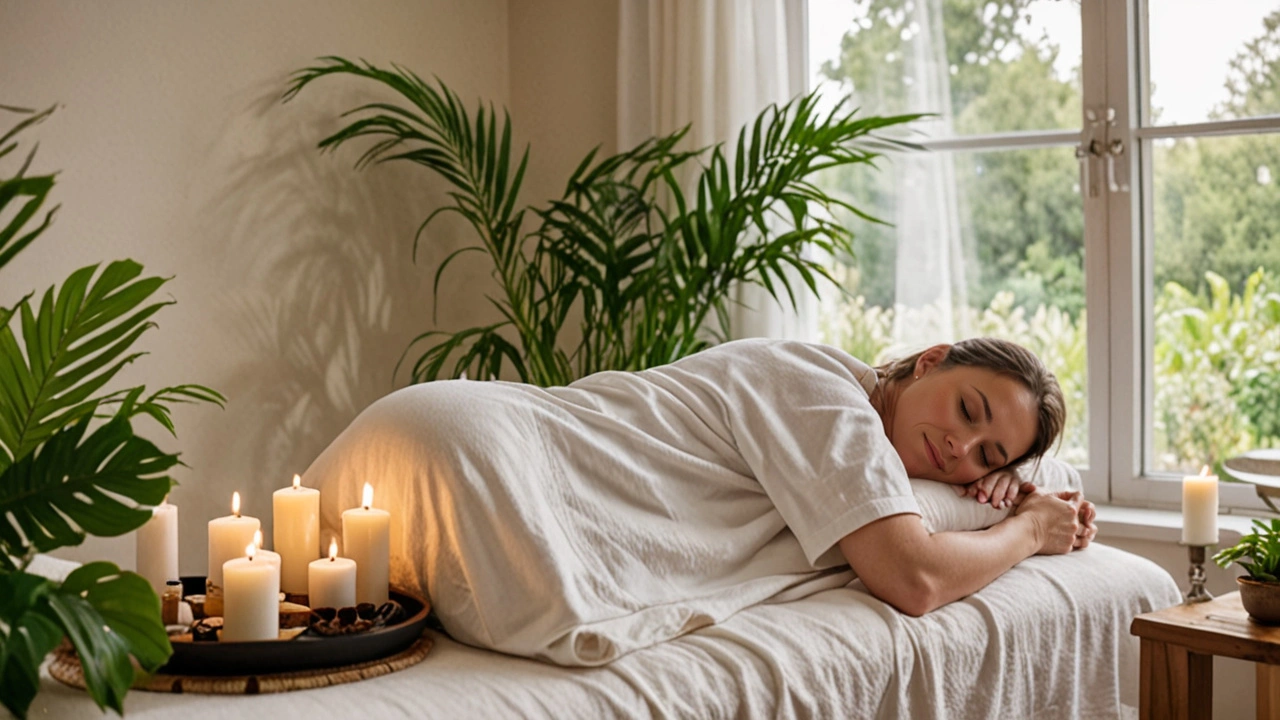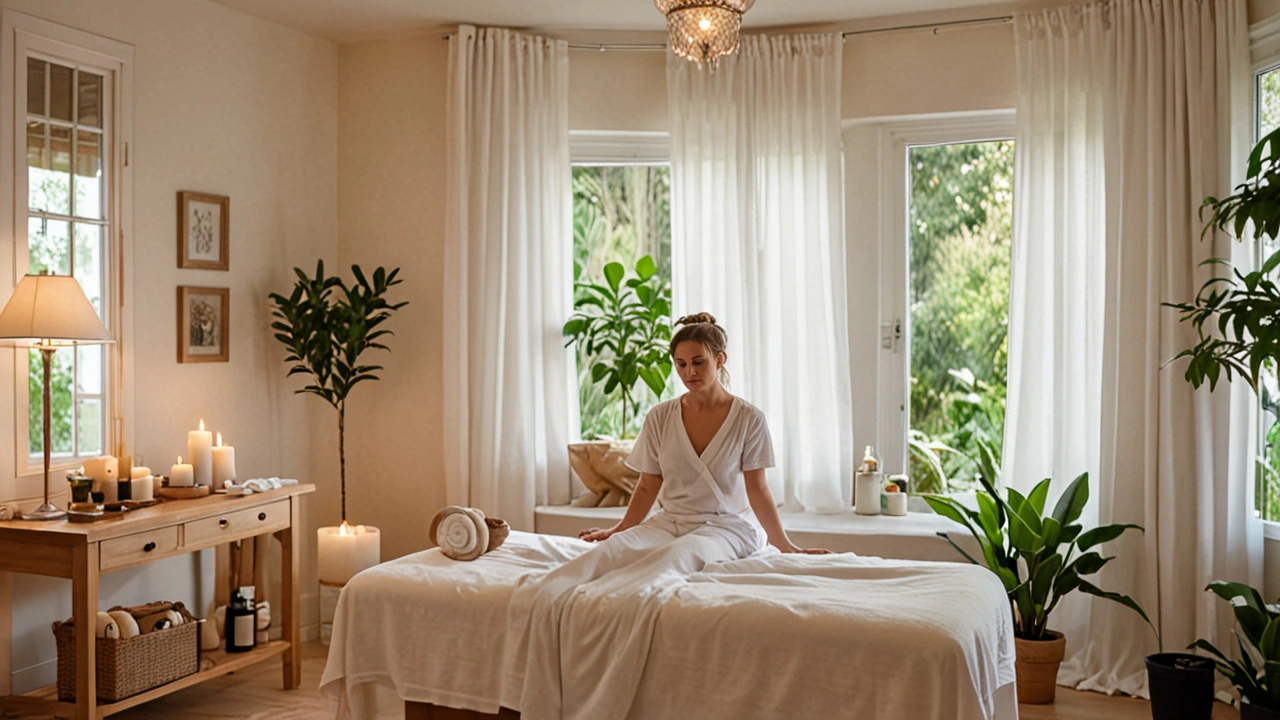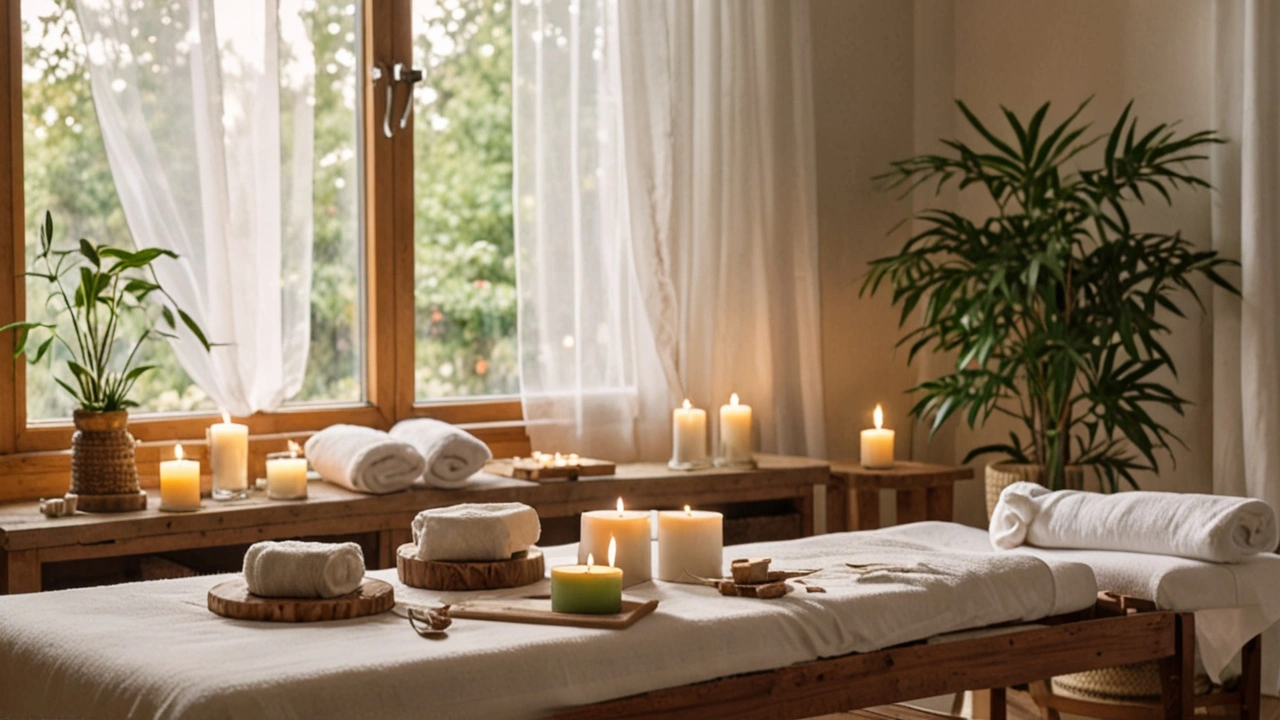Swedish massage is a popular form of therapeutic massage that has been practiced for centuries. Combining various techniques like long gliding strokes, kneading, and circular movements, this massage aims to relax the entire body. But its benefits go beyond relaxation.
Many people swear by Swedish massage for reducing muscle tension, improving blood circulation, and alleviating stress. Not only does it soothe the muscles, but it also has a profound impact on mental well-being.
In this article, we are going to explore what Swedish massage is, the multiple benefits it offers, how it works, and some tips to get the most out of your massage experience. Whether you are looking to relieve stress or simply indulge in self-care, Swedish massage might be just what you need.
- What is Swedish Massage?
- Benefits of Swedish Massage
- How Swedish Massage Works
- Tips for a Great Massage Experience
What is Swedish Massage?
Swedish massage is one of the most common and well-known forms of therapeutic massage. Originating in Sweden in the early 19th century, this technique was developed by Per Henrik Ling, a Swedish physiologist and gymnastics instructor. He combined his knowledge of anatomy with the movements inspired by Chinese, Greek, and Roman techniques.
A traditional Swedish massage uses a blend of five primary strokes: effleurage (long, gliding strokes), petrissage (kneading), tapotement (rhythmic tapping), friction (cross-fiber work), and vibration (shaking). These techniques work together to relax muscles, improve circulation, and increase flexibility. This variety in technique is one of the reasons why Swedish massage is so effective and versatile.
The beauty of Swedish massage lies in its simplicity. Each stroke has a purpose, designed to promote overall relaxation and stress relief. Typically, a full-body session lasts around 60 to 90 minutes, depending on the needs of the client. The pressure applied can range from light to firm but is usually kept at a medium level unless specified by the client or therapist. This adaptability makes it suitable for different body types and pain thresholds.
The Benefits of Swedish Massage
Swedish massage is known for its numerous health benefits. According to some studies, regular sessions can help reduce muscle tension and spasms, enhance blood circulation, and even strengthen the immune system. Alleviating stress and anxiety is another major benefit, contributing to improved mental health and better sleep. Many clients report feeling a significant reduction in anxiety and depression symptoms following their sessions.
According to the American Massage Therapy Association, "Swedish massage therapy is exceptionally beneficial for increasing the level of oxygen in the blood, decreasing muscle toxins, and improving circulation and flexibility while easing tension."
In addition to these advantages, Swedish massage can also aid in sports recovery. Athletes often use it as part of their training regimen to decrease muscle soreness and speed up recovery time. It can be an excellent choice for those recovering from injuries as well, as it helps improve the range of motion and reduces muscle stiffness.
Historical Roots and Evolution
The historical roots of Swedish massage are fascinating and reflect a blend of multiple healing traditions. Per Henrik Ling's original techniques were further developed and standardized by Dutch practitioners in the late 19th and early 20th centuries. This evolution has brought us the modern version of Swedish massage that we know today, practiced worldwide by certified professionals.
It's interesting to note that Swedish massage doesn’t just benefit the person receiving it. Many massage therapists find a sense of fulfillment and connection through offering this healing touch. This mutual benefit fosters a unique therapeutic relationship between the client and practitioner, often making the experience even more rewarding.
In essence, Swedish massage is much more than a simple relaxation technique. It’s a holistic practice that can rejuvenate the mind, body, and soul, offering a comprehensive approach to well-being. For those seeking a gentle yet effective way to unwind and heal, Swedish massage is a tried-and-tested method that promises lasting benefits.

Benefits of Swedish Massage
Swedish massage is more than just a relaxing experience. It's a form of therapy that offers numerous benefits for your mind, body, and soul. First and foremost, Swedish massage is renowned for its ability to alleviate stress. With our hectic lifestyles, stress is almost inevitable. But regular sessions of Swedish massage can help mitigate this by triggering the release of endorphins, the body's natural feel-good hormones. This can lead to a noticeable reduction in anxiety and boost in overall mood.
Another significant benefit of Swedish massage lies in its ability to reduce muscle tension. Whether you're an athlete, a desk worker, or just someone who deals with everyday muscle stiffness, this form of massage can help. The techniques used, including circular pressure applied by the hands and palms, kneading, and tapping, help to stretch and relax muscles. This not only eases pain but also improves flexibility and mobility.
Swedish massage also plays a crucial role in improving blood circulation. The long, gliding strokes stimulate the circulation of blood, which in turn increases the oxygen flow in your body. Better circulation can speed up the healing of injuries, reduce swelling, and improve your overall cardiovascular health. Enhanced blood flow means your cells get more oxygen and nutrients, helping them to function more efficiently.
Detoxification is another notable benefit. By increasing blood flow and stimulating the body's lymphatic system, Swedish massage helps to flush out toxins from the muscles and tissues. This can be particularly beneficial if you've been feeling sluggish or fatigued. A cleaner internal system often translates to more energy and a better overall mood.
Additionally, Swedish massage can support your immune system. The relaxation and stress relief it offers have a direct impact on immune function. When stress levels are high, your body's immune response is compromised, making you more susceptible to illnesses. Reducing stress through regular massage can thus improve your body's ability to fight off infections and stay healthy.
The mental benefits are just as profound. Many people find that Swedish massage helps them achieve a state of calm and mental clarity. The act of focusing on the physical sensations during a massage can serve as a form of mindfulness, bringing a mental break from the worries and anxieties of daily life. This mental reboot can improve focus, memory, and even creativity.
According to the Mayo Clinic, "Swedish massage can be a great way to promote relaxation, manage stress, and help with a range of physical and mental health issues."
Finally, let's not ignore the social and emotional benefits. The simple act of human touch can be incredibly healing. For those who feel isolated or disconnected, the warmth and care provided by a professional massage therapist can create a sense of connection and emotional wellbeing.

How Swedish Massage Works
Swedish massage is a practice rooted in a rich history of touch therapy, crafted to rejuvenate the mind and ease the body's tensions through a precise application of various techniques. It employs five main strokes: effleurage, petrissage, friction, tapotement, and vibration.
Effleurage involves long sweeping strokes applied with light to moderate pressure, moving fluids towards the heart. This technique not only warms up the muscles but also promotes blood circulation, which is essential for flushing out toxins from the body. The flowing nature of effleurage seeks to induce a state of calm, preparing both mind and body for deeper work.
Petrissage follows, using a kneading action on the muscles. This action helps break up tension and knots within the muscle fibers. The squeezing and rolling action targets deeper layers of muscle tissue, enhancing flexibility and easing chronic muscle tension. A well-executed petrissage stroke can significantly relieve pain and contribute to overall muscle health.
Next comes friction, where the therapist applies deep and circular movements, typically with the help of their thumbs or fingertips. This technique aims to break down scar tissue and improve the elasticity of joints and muscles. Friction is particularly beneficial for clients recovering from injuries, providing targeted relief to specific problem areas.
Tapotement is a rhythmic tapping or percussive technique that can include hacking, cupping, and beating. This method stimulates nerves and can wake up tired muscles. It's often used towards the end of a session to re-energize the body, giving a quick boost before transitioning back to everyday activities.
According to Massage Magazine, "Repeated tapotement can also stimulate the production of certain chemicals in the body, like serotonin, which helps elevate mood and reduce feelings of stress."
Lastly, vibration involves rapid shaking or trembling movements. This technique can be either fine or vigorous, aiming to loosen up muscles and promote relaxation. It's often employed on broader muscle groups, such as the back or thighs, helping the body to naturally relieve built-up stress and tension.
Combining these strokes, a Swedish massage session can last between 60 to 90 minutes. The therapist will tailor the massage to the individual's needs, adjusting pressure and techniques based on feedback and areas of concern. This customization ensures that each session is as beneficial and therapeutic as possible.
The science behind Swedish massage also involves the body's parasympathetic nervous system. Through gentle touch, the therapy stimulates this component of the nervous system, inducing a rest-and-digest response. As a result, the heart rate slows down, and the body enters a state of relaxation and recovery.
These techniques not only target physical well-being but also touch upon emotional and psychological aspects. By reducing cortisol levels, a Swedish massage can alleviate symptoms of anxiety and depression. Many studies indicate a marked reduction in stress and improvement in sleep quality after regular massage sessions.
For many, the regular inclusion of Swedish massage in their wellness routine leads to a noticeable improvement in overall health. Imagine a therapy that not only makes you feel great but also contributes to your body's efficient functioning. As the benefits of Swedish massage become more widely recognized, more individuals are turning to this holistic approach to enhance their quality of life.

Tips for a Great Massage Experience
Getting a Swedish massage is an amazing way to relax and rejuvenate. To make the most out of this soothing experience, it helps to keep a few tips in mind. First and foremost, communication with your massage therapist is key. Let them know if you have any particular concerns or areas that need extra attention. This will help them tailor the massage to better suit your needs.
Hydration plays an important role in getting the best out of your massage. It’s a great idea to drink plenty of water before and after the session. This helps in flushing out toxins that get released during the massage. Another point to consider is your comfort level. Make sure the room’s temperature is to your liking, and don't hesitate to ask for adjustments if needed.
Arriving early can also significantly enhance your relaxation. Giving yourself some time to settle in and unwind before the massage begins can set a positive tone for the entire session. It allows you to move from the hustle and bustle of everyday life to a state of calmness and readiness. Also, remember to breathe deeply and consistently throughout the massage, as this can aid in relaxation and improve blood flow.
Consistent massages can amplify the benefits you receive. If you find the experience beneficial, consider making Swedish massage a regular part of your wellness routine. The cumulative effects of regular sessions can lead to improved muscle flexibility, reduced stress levels, and better overall health. Additionally, you might want to combine your massage with other holistic treatments like yoga or meditation for a more comprehensive approach to wellness.
Proper aftercare is another crucial aspect. After the massage, take some time to rest and let your body absorb the benefits. Avoid strenuous activities for the rest of the day, and allow yourself to enjoy a warm bath. This can help relax your muscles even further. Eating light meals and maintaining hydration after the massage is also recommended.
One final tip is to trust your instincts. If something doesn’t feel right during the massage, do not hesitate to speak up. Your comfort and well-being are the top priorities, and a good massage therapist will appreciate your feedback. Adhering to these tips can help ensure that every Swedish massage session you go through is a day of genuine relaxation and revitalization.


 Health and Wellness
Health and Wellness